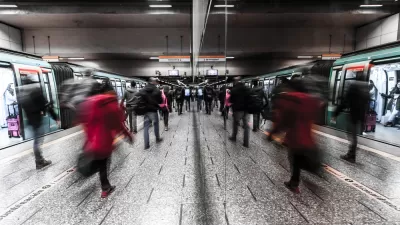A new study breaks down charitable giving by zip code, revealing the great variety in donations by area and economic group. Pam Fessler shares the results.
Among the most compelling findings in a new study by the Chronicle of Philanthropy: "It turns out that lower-income people tend to donate a much bigger share
of their discretionary incomes than wealthier people do. And rich
people are more generous when they live among those who aren't so rich," reports Fessler.
So what are the causes of the geographical and economic disparities in charitable giving? Tax incentives are one. Religion is another. According to the report, "Regions of the country that are deeply religious are more generous than those that are not."
So is economic segregation. "High-income people who live in economically diverse neighborhoods give
more on average than high-income people who live in wealthier
neighborhoods," writes Fessler. Seen in this light, the national rise in economic segregation becomes an even greater threat to the health of our communities.
The study found that Utah, the District of Columbia, and Mississippi are the most giving states. Salt Lake City, Memphis, and Birmingham are the most giving metro areas.
FULL STORY: Study Reveals The Geography of Charitable Giving

Planetizen Federal Action Tracker
A weekly monitor of how Trump’s orders and actions are impacting planners and planning in America.

Maui's Vacation Rental Debate Turns Ugly
Verbal attacks, misinformation campaigns and fistfights plague a high-stakes debate to convert thousands of vacation rentals into long-term housing.

San Francisco Suspends Traffic Calming Amidst Record Deaths
Citing “a challenging fiscal landscape,” the city will cease the program on the heels of 42 traffic deaths, including 24 pedestrians.

Defunct Pittsburgh Power Plant to Become Residential Tower
A decommissioned steam heat plant will be redeveloped into almost 100 affordable housing units.

Trump Prompts Restructuring of Transportation Research Board in “Unprecedented Overreach”
The TRB has eliminated more than half of its committees including those focused on climate, equity, and cities.

Amtrak Rolls Out New Orleans to Alabama “Mardi Gras” Train
The new service will operate morning and evening departures between Mobile and New Orleans.
Urban Design for Planners 1: Software Tools
This six-course series explores essential urban design concepts using open source software and equips planners with the tools they need to participate fully in the urban design process.
Planning for Universal Design
Learn the tools for implementing Universal Design in planning regulations.
Heyer Gruel & Associates PA
JM Goldson LLC
Custer County Colorado
City of Camden Redevelopment Agency
City of Astoria
Transportation Research & Education Center (TREC) at Portland State University
Jefferson Parish Government
Camden Redevelopment Agency
City of Claremont





























